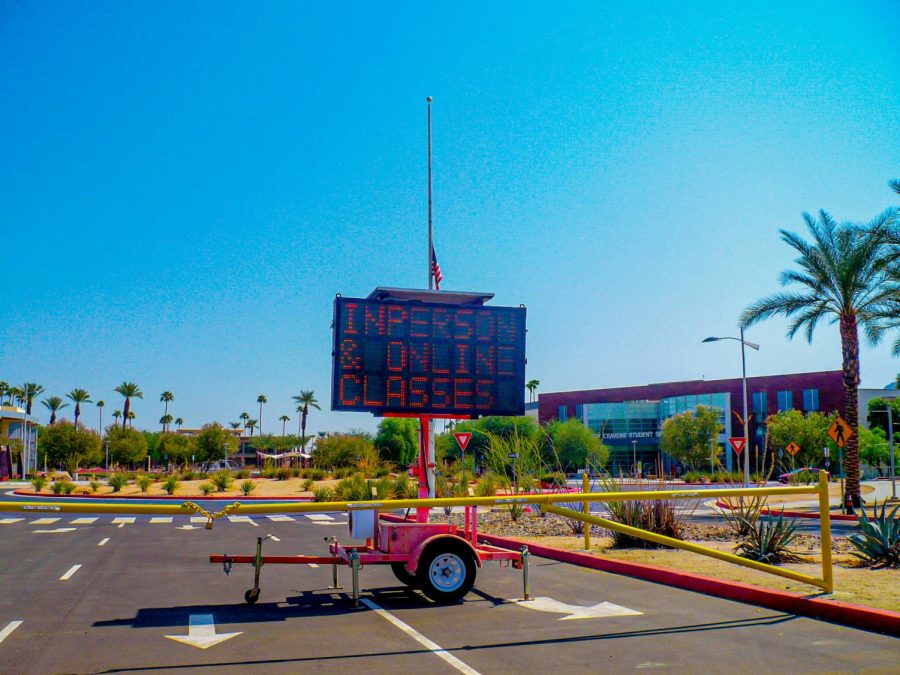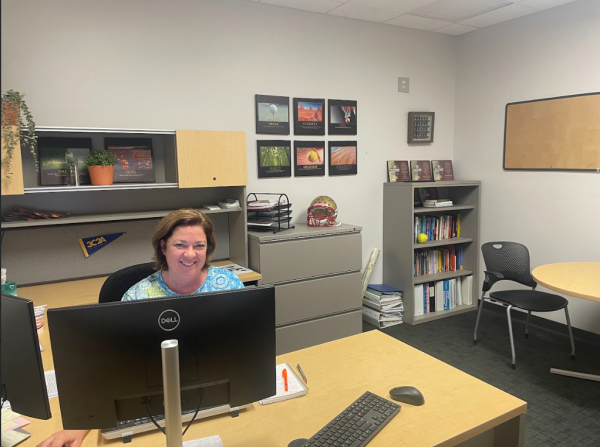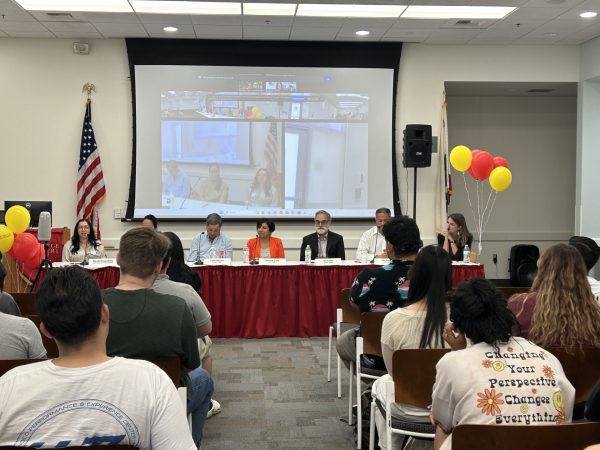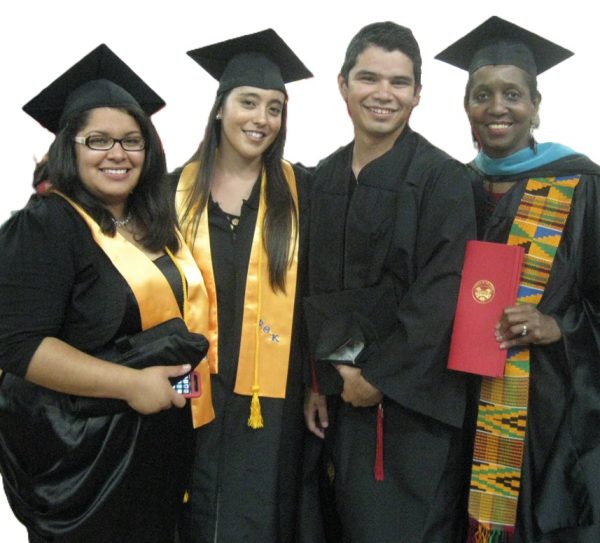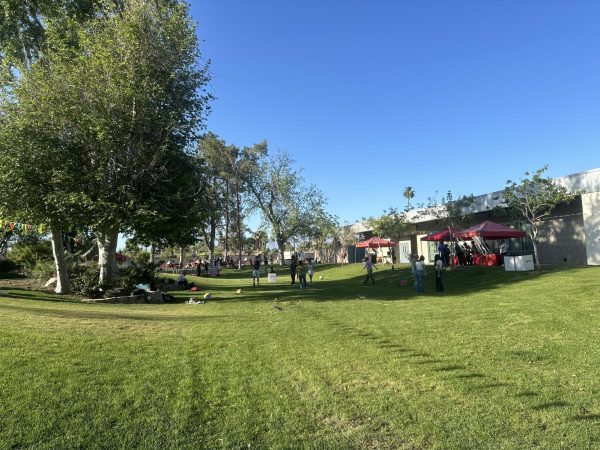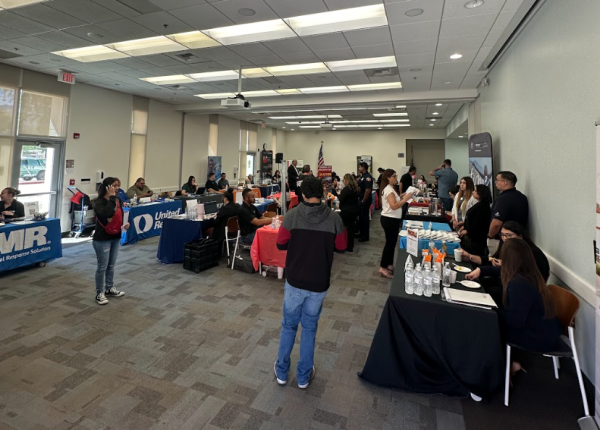Students weigh in on in-person vs. online learning
The discussion between in-person and online learning remains relevant, as the COVID-19 pandemic forced classes to move online and the transition back to on-campus learning unfolds. College of the Desert offers four ways to learn online: asynchronous, synchronous, online combo and hybrid. The asynchronous format is fully online with no scheduled live stream class meetings. The synchronous format is also fully online but contains regularly scheduled required live stream class meetings. The online combo is a mix of the asynchronous and synchronous formats, with some required scheduled live stream class meetings. The hybrid format is mostly online with options for the asynchronous, synchronous and online combo styles, in addition to required on-campus meetings.
Whether it be due to the COVID-19 pandemic or personal preference, College of the Desert students have been given the opportunity to try out the various learning styles and formats that are offered. Such exposure to different types of learning has also allowed students to gain a better idea of their learning styles and which format–in-person or online–is most suitable to their needs. Everyone learns differently, so the various formats provide more widespread reach and applicability to individual learning styles, thereby optimizing student success.
The switch to online learning in the wake of the COVID-19 pandemic also revealed the importance of the in-person dynamic to many students and their academic success.
Stephanie Huerta and Lailah Rivera, current students at College of the Desert, shared their thoughts on the discussion between in-person and online learning or the topic of in-person versus online learning.
Huerta, 19, has two synchronous and three asynchronous classes this fall semester. “My classes are online by choice just because they fit into my schedule better,” she said. “Synchronous classes provide more structure but also give me a lot of freedom in the aspect that I don’t need to be on campus. It also allows for teachers to interact with students without having to be in person.”
Rivera, 20, has three asynchronous, one synchronous and one in-person class this semester. “Most of my classes are online due to covid,” she said. If she could choose her ideal learning formats for her classes, Rivera said she would choose to have a mix. “I would choose to mix in some in-person classes with asynchronous just because I feel having all of them in-person at once can be overwhelming,” she said. “Overwhelming in the sense of socializing, I’ve become a little more of a homebody.”
Huerta and Rivera pinpointed the benefits and drawbacks of both in-person and online learning. “Some advantages of online classes are having access to the classes at any time of day and nearly anywhere that has internet connection,” Rivera said. Huerta shared a similar sentiment. “I have more flexibility planning school around my day,” she said.
They also noted the drawbacks of online learning on grounds of interpersonal interaction. “Some disadvantages would be not being able to express yourself as in-person,” Rivera said. “I have art classes, and when I’m having trouble drawing something it’s a little more difficult to write out in an email what I’m having trouble with. I feel then that I’m not taking in all of the information and knowledge the class is giving.”
Huerta also spoke on the lack of communication between peers with online learning. “I haven’t been able to create good peer relationships with people in online classes,” she said.
In-person classes are not without their drawbacks either, though. “I do think that in-person classes are likely the best option for learning for people with not very busy schedules,” Huerta said. “They do offer a more secure version of learning and create an environment that keeps students away from any distractions. On the other hand, in-person classes have a scheduled time and require transportation to campus.”
Rivera concurred with the social benefit of in-person classes and how she feels like she is “going back to how it was prior to COVID.” She also noted the aspects of time and transportation that accompany in-person classes. “The drawbacks are the amount of more time it takes to get ready to leave my house and take account for transportation to get there on time.”
Huerta and Rivera expressed their level of comfortability with the return to in-person classes this semester. “I do feel comfortable returning to in-person classes,” Huerta said. “The way my daily schedule is set I prefer online classes but I wouldn’t mind going in person.”
Rivera spoke about how her personal safety measures and the lack of adherence from others have impacted her comfortability on campus. “I feel somewhat comfortable going back to in-person just because I’m only attending one class and I’m more aware of who I’m exposed to,” she said. “The other thing is that going back to class I’ve noticed not everyone is taking all of the safety measures seriously and that is a little scary being someone who is very cautious about taking care of myself.”
Huerta thinks it’s great that College of the Desert is offering in-person classes. “I know there’s a lot of people who require structure in their classes and being online was simply not working for them,” she said.
For information on COVID-19 requirements and protocols for students and employees or coronavirus updates at College of the Desert, visit collegeofthedesert.edu.

Sam is pursuing a Journalism AA-T Degree at College of the Desert. She is looking to combine her passions for sports and writing through a career in sports...

